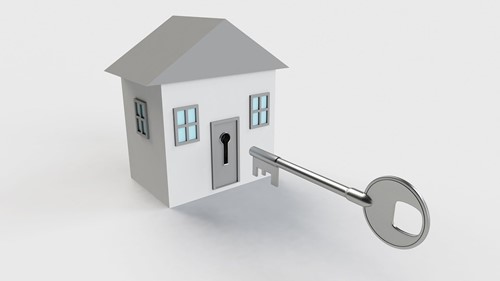
Image by Arek Socha from Pixabay
If you bought a house that was over $484,350 prior to 2020, you had to get a jumbo loan, which is a non-conforming loan. The Federal Housing Finance Agency (FHFA) increased the limit on conforming loans to $510,400 in most areas. The FHFA also increased the loan limit to $765,600 in some high-cost areas, which include Alaska, Guam, Hawaii and the U.S. Virgin Islands. FHFA increased the loan limit for conforming loans because home prices increased by an average of 5.38 percent from the third quarter of 2018 to the third quarter of 2019.
What is a Conforming Loan?
A conforming loan follows standardized rules set by the Federal National Mortgage Association (FNMA / Fannie Mae) and the Federal Home Loan Mortgage Corporation (FHLMC / Freddie Mac). The two companies are government-sponsored, and they drive the home loan market. The most common standardized rule is the loan limit. Still, the two organizations dictate how much a loan-to-value ratio can be, your debt-to-income ratio, higher interest rates based on your credit score and what documentation you might need for a home loan. A conforming loan must also have private mortgage insurance (PMI) if the down payment is less than 20 percent.
Jumbo and Other Non-Conforming Loans
Banks do not like to write non-conforming loans because they cannot sell those loans to Fannie Mae and Freddie Mac, or most of the other smaller organizations that buy loans. The most common non-conforming loan is a jumbo loan – a loan that is outside the loan limit, which is increasing for 2020. Other types of non-conforming loans might include loans for people who do not meet the debt-to-income ratio or the loan-to-value ratio. Because those loans are riskier, they often come with higher interest rates. Generally, you must also have a very good credit score to qualify for most non-conforming loans, especially jumbo loans.
High-Cost Areas
While some states and territories were mentioned as high-cost areas above, some places in the continental United States are also considered to be high-cost areas. Washington, D.C. and some parts of California have the higher limit of $765,600 for 2020 because the prices of single-family homes are higher than average.
Qualifying for a Jumbo Loan
To qualify for a jumbo loan, you’ll have to jump through more hoops. Some factors a lender look for include:
-
A credit score of at least 700. Some lenders require a score of at least 720.
-
Your debt-to-income ratio (DTI). While non-conforming loans may go outside the typical DTI, some lenders might refuse to go over 45 percent.
-
The lender might require you to have cash reserves of several months to a year in the bank.
-
The lender might require extensive documentation. You might have to supply your complete tax returns and several months of bank statements for a jumbo loan.
-
Lenders might require a second appraisal of the home.
-
A larger down payment.
-
You might get a higher interest rate, depending on the lender, your financial situation and market conditions.
-
Closing costs are often higher because of the extra steps you must go through to qualify for the loan.
As with any loan, shop around for a jumbo loan instead of jumping at the first loan offered.
About the Author

Judy Szablak
With over 30 years in the industry, Realtor Judy Szablak has been on national television for her real estate expertise on the HGTV Network, featured on Martha Stewart Living Radio "Morning Living” , NPR radio as an expert real estate panelist, It’s Relevant News channel, and quoted in the Wall Street Journal for her in depth knowledge of Fairfield County Connecticut real estate.
She was also on the local NPR radio station (WSHU) as a Fairfield County CT real estate expert. Judy has provided multiple online respected news sources with her real estate expertise including The Daily Easton, The Daily Weston, The Daily Fairfield, The Daily Stamford and The Daily Greenwich, as well as in print in the New York Post. She is a weekly Real Estate Columnist for WestportNow.com, another real estate column "Real Estate With Judy” is syndicated through Hearst CT Media Online and seen in The Connecticut Post, The Danbury News-Times, The Stamford Advocate, The Greenwich Time, The Hour, Fairfield Citizen, Westport News, Darien News, New Canaan News and the Wilton Villager.
Judy is also the author of the book, The Art of Buying or Selling a Home, available at all major book retailers. Additionally, Judy has been nationally recognized in a number of national real estate trade magazines, some with distribution to over 1 million members. She was featured in Real Estate Today as early as 1994 for her commitment to, and implementation of technology in real estate. Judy appeared in the Certified Residential Specialist Magazine, as she provided advice on marketing strategies and ethics in the article titled "Marketing Makeovers.”
Judy was also featured in REALTOR® Magazine, regarding image enhancement for Realtors. She was again featured in REALTOR® Magazine, in an article on "Achieving Flow” and operating at optimal peak performance. In another article in the same publication, Judy offered guidance to fellow real estate professionals as she explored the topic of implementing and maintaining personal websites. She has appeared in The Council of Residential Specialists Magazine, which featured her ideas regarding technology. Additionally, Judy authored an article on marketing and technology for the Certified Residential Specialist (CRS) Online Magazine. On two occasions, in 2015 and 2017, she appeared as a featured agent in Top Agent Magazine. I have a few other websites- www.TheCtrealtyBlog.com www.CtHomesAndRealEstate.com www.BestWestportHomes.com www.ThePetitePowerhouse.com www,SzablakConsulting.com
